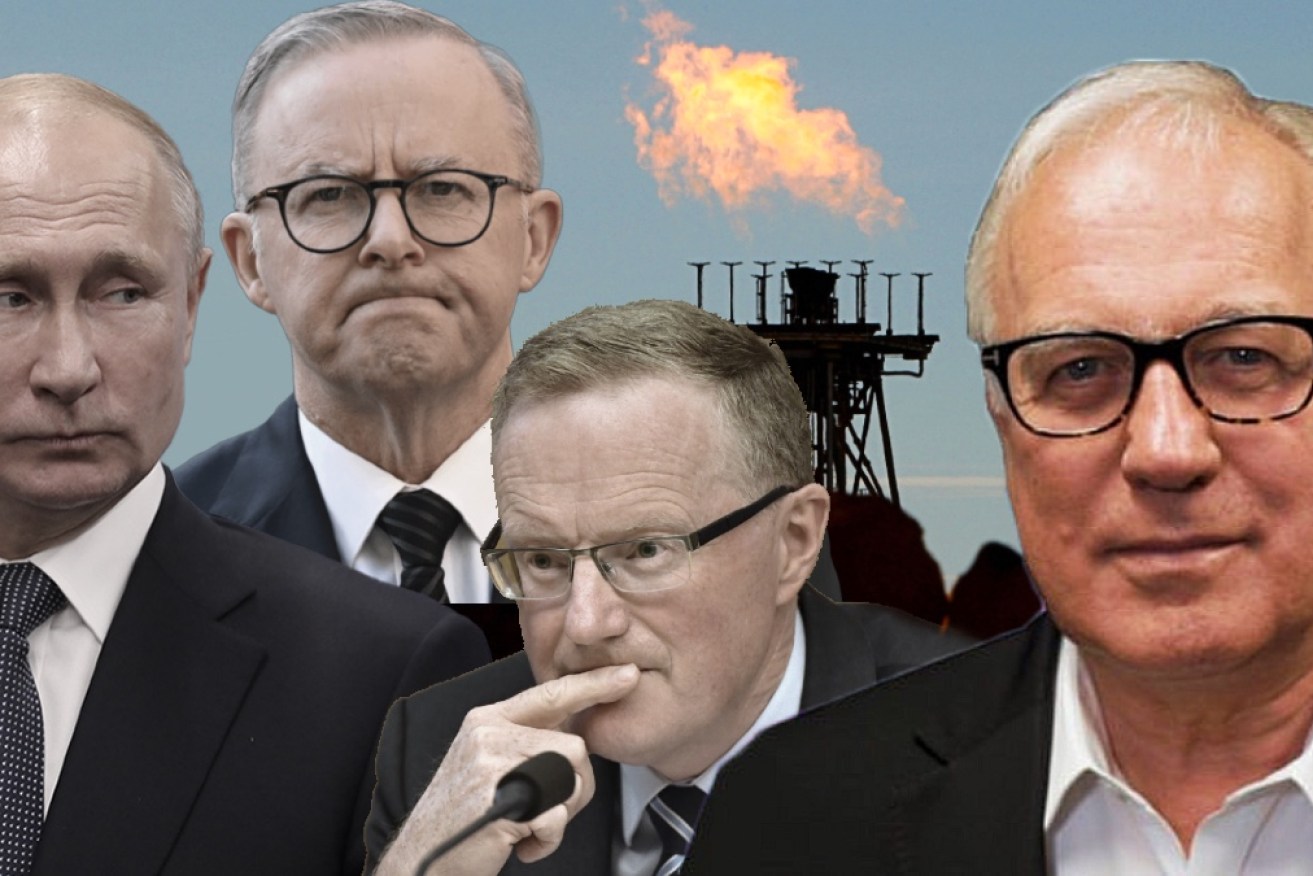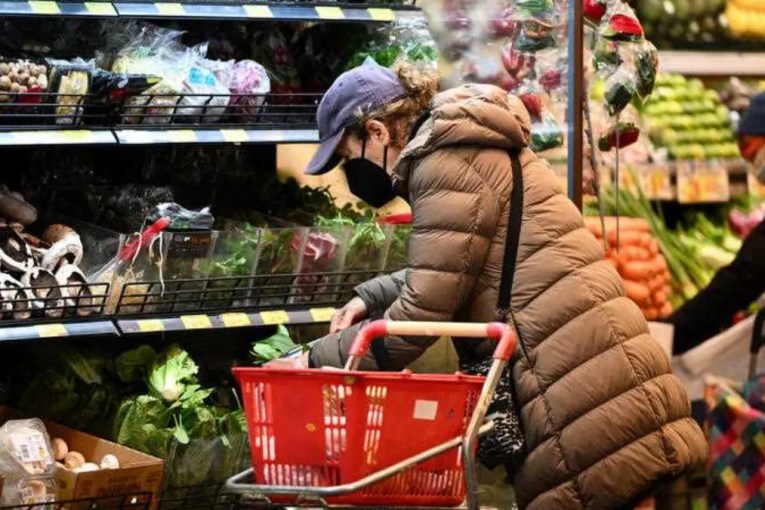This was the year of broken promises.
There were three of them, and they have haunted the whole of 2022, making it the horrible year it has been.
The big one, from which all else flows, was Vladimir Putin saying he would not invade Ukraine, several times.
A month before he broke that promise on February 24, the then opposition leader Anthony Albanese kicked off his election year on January 25 by promising at the National Press Club that Labor’s climate change policy would cut power bills by $275 a year.
It was based on modelling by Reputex that said renewable energy would bring electricity prices down by that much by 2025. Anyone who bases a promise on modelling is asking for trouble.
A week after that, on February 1, Reserve Bank Governor Philip Lowe said interest rates would not go up for “some time yet”. Having spent a year promising that they wouldn’t go up until 2024, he made that a bit more vague as 2022 began, but everybody only remembered the bit about 2024.
Neither man saw the trap the Russian President had set for them, by lying about his intentions in Ukraine.
Trap was set
When the election campaign got underway in April, missiles were raining upon Ukraine and sanctions were raining upon Russia, about to send power bills rocketing. But Anthony Albanese, undeterred, doubled down on the $275 promise, and kept it up after he won in May.

Vladimir Putin had no intention of honouring his promise on Ukraine. Photo: EPA
And so did Philip Lowe. Following the March RBA meeting, five days after the war began, he repeated the reassurance that “it would be some time yet” before rising inflation would require a rate hike.
And now here we are in December having endured the eighth rate hike in a row – the most urgent lifting of interest rates in a generation – and huge increases in power bills that the Labor government is desperately, expensively trying to stop.
These two stories have defined the year in both politics and economics, but there is a big difference between them.
Philip Lowe simply disregarded his earlier “promises”, saying they hadn’t been promises at all but the RBA’s “expectation”, while for Anthony Albanese election promises can’t be disregarded. That $275 promise is the reason the government is now intervening in the coal and gas markets – to try to stop prices going up, or so he can at least say he tried.
I have wondered before why Labor is so reluctant to intervene, and haven’t come up with an answer yet.
Gas is not a free market – it’s controlled by a cartel – so I really don’t know why the government didn’t simply impose a domestic reservation policy, as recommended by the ACCC, instead of an expensive price cap.
But not only has the cartel managed to kill a national domestic gas reservation for the moment, they got the price cap up to $12 a gigajoule, which should be called gigglejoules because that’s what they’d be doing in private.
In public they are complaining bitterly, warning that they won’t be building more projects because of it, but that’s rubbish.
Western Australia imposed a gas reservation on exporters of 15 per cent of production, which must be reserved for the local WA market, in 2006.
Since then the following projects have been approved: Wheatstone, Gorgon, Prelude and Scarborough. Total cost: $93 billion.
This year the average business electricity price on the east coast has almost tripled from 7c per kilowatt hour to 18c, while on the west coast it has gone from 5.67c/kWh on January 1 to 8.52c now, a rise of 50 per cent.

Western Australian Premier Mark McGowan opens a new gas project – the state has buffered rising power prices by imposing a reservation on exporters. Photo: Bright-r
To sum up: Power prices in WA have gone up by a third as much as on the east coast, and there has been no discernible drop-off in investment in new projects.
Obviously there should be a national domestic reservation like WA’s, with the local price set by the ACCC based on cost plus a reasonable return on investment.
This week the Prime Minister put national gas reservation on the table.
Anthony Albanese was asked on ABC radio: “Is that something we need to look at nationally, then?”
Mr Albanese replied: “We do.”
But that’s as far as it went.
In August I did this little video for the ABC, summarising an ACCC report on the gas industry which had revealed that five producers entirely controlled the market, far from adding to domestic supply, they were taking gas out of the local market, and that there would be a shortfall next year of 56 petajoules.
Instead of following the ACCC’s recommendation and telling the gas cartel to increase domestic supply, the Labor government has put a price cap of $12 a gigajoule on gas and $125 a tonne on coal, and will spend billions of dollars of taxpayers’ money in compensation.
The average cost of the top six coal producers, according to their annual reports, is $82 per tonne, so their price cap gives them a profit margin of 52 per cent.
The average cost of the east gas producers, excluding a return on equity, is $5.04 according to the Institute for Energy Economics and Financial Analysis. Including return on equity, it would be 5.53c/GJ.
So their $12 price cap gives them a profit margin of 117 per cent over and above a return on equity. A margin of 52 per cent over basic cost, the same as for coal, would mean a price cap of $7.66, not $12.
This is a triumph for the theatrically whingeing Australian Petroleum Production and Exploration Association (APPEA), but why is that lobby group so much more powerful than the Australian Coal Association (ACA)?
Maybe it’s just because gas is delivered directly into voters’ homes as well as power stations, and could be turned off, while coal goes to power stations on long-term contracts, so the gas companies have got the government by the pipes.
But it’s to Labor’s shame that they have caved in to them.
Voters pay the price
As for the RBA’s broken promise … Australia might avoid a recession next year while the United States has one, but that won’t be thanks to Philip Lowe.
It will be partly because of rising female workforce participation, which has bounced back strongly after the pandemic and before that had been rising for years. In the US, female participation has stayed down.
Why? Because houses here are much more expensive relative to income than in America. Check out this chart of housing as a percentage of income:
Source: Minack Advisers
The direct result of that, is this:
Source: ABS
Female participation falling in the US and rising here has meant a tighter labour market there, and much stronger wage growth, which the US Federal Reserve is trying to stamp on by increasing its benchmark rate a half-point to a range of 4.25 per cent to 4.50 per cent, its highest level in 15 years — with more hikes to come.
In Australia, the RBA cash rate has been lifted to 3.1 per cent.
So, thanks to Australia’s unaffordable housing, Philip Lowe might not end up with a recession on his conscience, only the legacy of a broken promise.
Alan Kohler writes for The New Daily twice a week. He is also founder of Eureka Report and finance presenter of ABC news.












